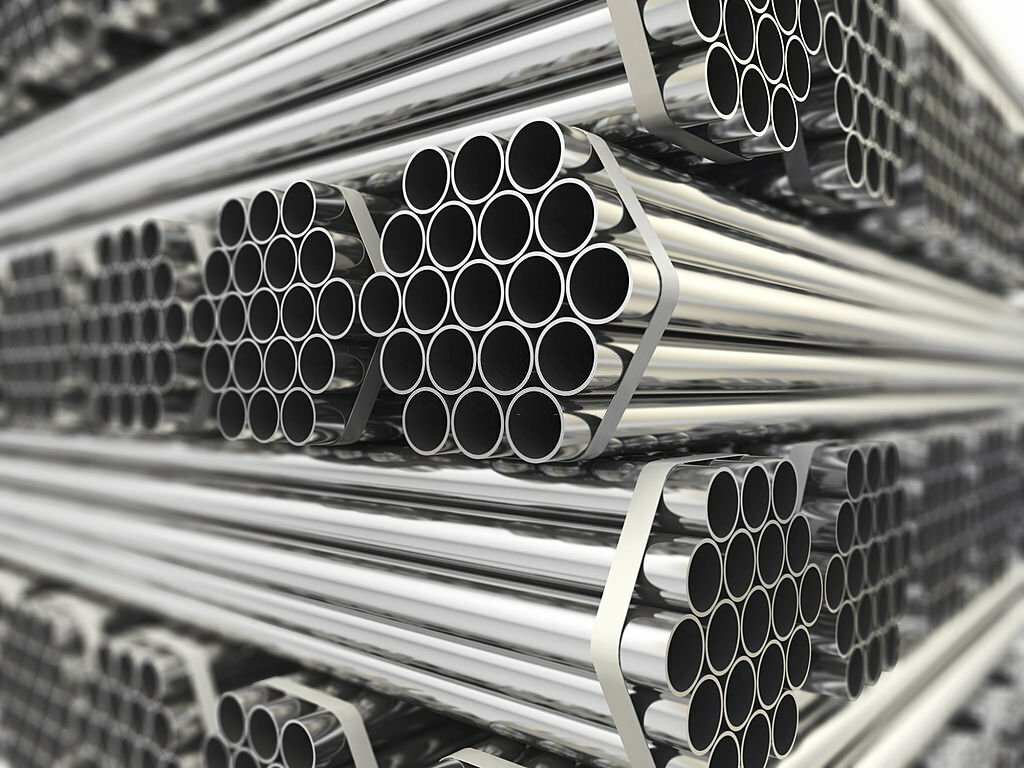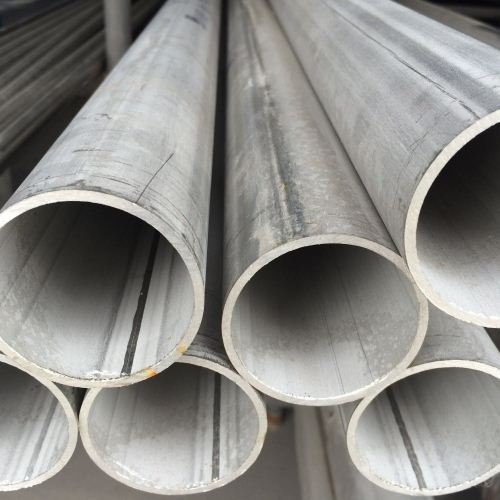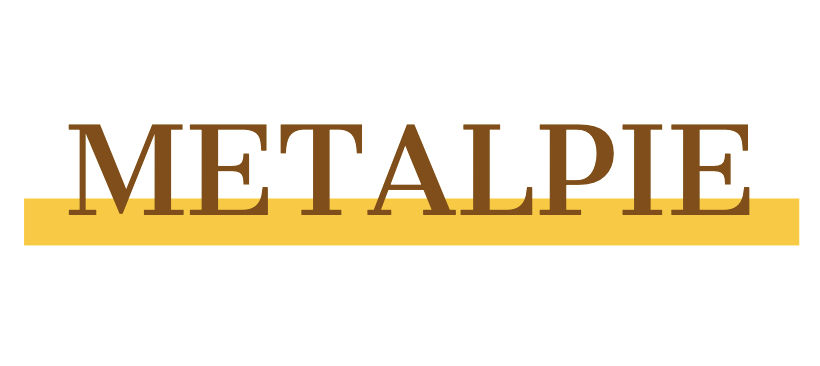Çelik borular birçok endüstride kullanılan dikkat çekici malzemelerdir. Mükemmel mukavemetleri ve yüksek yüklere dayanma kabiliyetleri nedeniyle çelik borular çok ünlüdür. Ayrıca sıvıların, gazların ve diğer malzemelerin taşınmasında da rol alırlar. İnşaat ve altyapıda da çelik borular önemli bir rol oynar. Dolayısıyla, çelik boruların her sektörde gerekli olduğunu görebiliriz. Bu nedenle, çelik boru imalatının geliştirilmesi de çok önemlidir.
Bu makale, çelik boru üretim sürecinin temellerini tartışmayı amaçlamaktadır. Özellikle dört tip SS boru üretim yöntemini vurgulamaktadır. Farklı çelik boru türleri için kullanılan bu yöntemleri öğreneceğiz. Daha fazlasını keşfedelim.
Çelik Boru İmalatı Nedir?
Basitçe, çelik boru üretim sürecinin çelik boru imalatı olarak adlandırıldığını söyleyebiliriz. Aslında ham çelik malzemeleri özel tasarlanmış borulara dönüştürür. Her imalat süreci, çeşitli uygulamalar için özel gereksinimleri karşılamaya yöneliktir. Çelik boru imalat süreci, farklı çelik boru türlerine göre değişiklik gösterebilir. Evet, bugünkü yazımızın ana içeriği bu. İlerleyen bölümlerde bu süreçler hakkında daha fazla bilgi vereceğiz.
Çelik boru imalat süreçleri, özelleştirilmiş çözümler sağlamada önemli bir rol oynar. Her uygulamanın özel taleplerini anlayarak, bu imalat yöntemleri değişebilir. Hassas uygulamaları karşılamak için boruların boyutunu, kalınlığını ve konfigürasyonunu değiştirmeleri gerekebilir.

Çelik boru çeşitleri
Farklı üretim süreçlerine dayalı olarak, çelik borular iki ana türe ayrılır. Bu çeşitler, imalat yöntemlerindeki farklılıklardan kaynaklanır. Borunun yapısını ve özelliklerini etkiler. Bu üretim süreçlerini anlamak çok önemlidir. Neden mi? Çünkü belirli talepleri karşılamak için en uygun boruları seçmek için gereklidir.
Bu iki türü kavrarken borunun yüzeyine bakabiliriz. Boru üzerindeki düz, kalın bir çizgi kaynak yapıldığını gösterir. Yüzeyde herhangi bir çizgi veya sürekli zorluklar yoksa boru dikişsizdir. Bazı akademik göstergelere göz atalım.
- Dikişsiz paslanmaz çelik boru: Kaynaklı ek yeri olmayan tek bir çelik parçasıdır. Dikişsiz çelik boru üretiminin dört ana yöntemi, düzgün bir yapı sağlar. Ayrıca olağanüstü mukavemet sağlarlar. Gerçekten de dikişsiz bir çelik boru, paslanmaz çelik kaynaklı borudan daha üstündür. Dikişsizliğin faydası sızıntı riskini azaltır. Buna ek olarak, borunun yüksek basınç ve sıcaklık koşullarına dayanma kabiliyetini artırır.
- Paslanmaz çelik kaynaklı borular çelik veya kangalların kaynak yoluyla birleştirilmesiyle yapılır. Bu çelik boruların avantajı, çeşitli çaplarda ve kalınlıklarda boru üretebilmesidir. Birçok endüstri için uygun maliyetli çözümlerdir. Ayrıca dikişsiz boru üretim süreci gibi dört ana üretim tekniğine sahiptirler.
Dikişsiz Çelik Boru İmalat Süreci
Dikişsiz çelik boruların üstün özellikleri, onları çok çeşitli sektörlerde çok popüler hale getirmiştir. Örnekler arasında petrol ve gaz endüstrileri bulunmaktadır. Bu endüstrilerde, dikişsiz çelik borular genellikle aşındırıcı sıvıları taşımak için kullanılır. Öte yandan, dikişsiz paslanmaz çelik borular genellikle yüksek sıcaklık uygulamalarında da kullanılır. Enerji üretimi ve nükleer endüstrilerde dayanıklılık ve güvenilirlik sağlarlar.
Boru boyutlarına ve bütçesine bağlı olarak, üreticiler dört ana dikişsiz boru üretim yöntemi kullanmaktadır. Aşağıda ele alınan dört üretim süreci de benzer prosedürlerle başlar. Aşağıda ilk formaliteler yer almaktadır:
- Kütük Hazırlama: İşlemler yüksek kaliteli bir çelik kütüğün seçilmesiyle başlar. Bu aslında yekpare yuvarlak veya silindirik bir metal çubuktur.
- Isıtma: Seçilen kütük daha sonra uygun bir ısıtma işleminden geçirilir. Bu adım plastikliğini artırır ve deforme olmasını ve şekillendirilmesini kolaylaştırır.
Daha sonra, farklı üretim aşamalarını takiben bazı benzer son rötuşları uygularlar. Bunlar aşağıdaki gibidir:
- Soğutma ve Kesme: Bu aşama, ısıtılan boruları soğutur ve ardından bunları belirtilen uzunluklarda keser.
- Düzeltme: Kesilen borular, homojenliği sağlamak için düzleştirme işlemine tabi tutulur.
- Uç Yüzü: Son olarak, işlem çelik boruların uçlarının yüzleştirilmesiyle üretimi sonlandırır. Bu aşama pürüzsüz ve eşit yüzeyler elde etmek için gereklidir.
Mandrel Değirmen Süreci
Mandrel Değirmen tekniği, adını üretim sürecinde önemli bir araç olan mandrelden almaktadır. Prosedürün delme adımı sırasında mandrel, içi boş tüp veya borunun içine yerleştirilen bir çubuk veya şafttır. Mandreller ise delme, boyutsal doğruluk ve yüzey kalitesine yardımcı olur. İşlemin aşamaları aşağıdaki gibidir.
- Piercing: Bu, mandrel değirmen işleminin en önemli kısmıdır. Bir mandrel bu ısıtılmış kütüğü deler ve içi boş bir tüp oluşturur.
- Mandrel Frezeleme: Delinmiş boru daha sonra boyutsal doğruluk için mandrel frezeleme işlemine tabi tutulur. Ayrıca uygun iç yüzey kalitesi de sağlar.
- Esneme Azaltıcı: Boru, istenen boyutlara ulaşmak için bir indirgeme makinesi aracılığıyla uzatılır.
Mandrel freze tekniği, büyük boyutsal hassasiyete sahip dikişsiz, daha küçük çaplı borular üretir. Yöntem, hassas boyutlar ve pürüzsüz bir iç yüzey sağlar. Bu süreç aslında mannesman plug mill boru üretim sürecinden daha hızlıdır.
Mannesmann Plug Mill Boru Üretim Süreci
Bu üretim süreci adını mucidi Heinrich Mannesmann'dan almıştır. Kendisi 19. yüzyılın sonlarında bu süreci keşfeden Alman bir mühendistir.inci yüzyıl. Bu üretim sürecinde birden fazla alet ve piercing kullanılmaktadır. Yöntem aşağıdaki aşamaları içerir.
- Delme ve Uzatma: Konik, dönen bir delici veya tapa ısıtılmış kütüğü deler. Kütüğü kademeli olarak uzatır ve dikişsiz bir çelik boruya dönüştürür.
- Haddeleme (tapa değirmeni): Süreç daha sonra boyutlarını daha da hassaslaştırmak için başka bir tapa değirmeni kullanır.
- Makaralama ve Boyutlandırma I: Ardından, işlem istenen boyutları ve kalınlığı elde etmek için delinmiş boruyu makaralar ve boyutlandırır.
- Soğutma ve düzleştirme: Uzatılmış ve boyutlandırılmış tüp soğutulur ve homojenlik için düzleştirilir.
- Isıl işlem ve boyutlandırma II: Isıl işlemden sonra, borunun mekanik özelliklerini sağlamak için işlem daha da boyutlandırılır. Bu adım gerekli spesifikasyonları karşılamak için devam eder.
Mannesmann tapa değirmeni prosesi, daha büyük çaplı dikişsiz boruların üretimi için uygundur. Bu proses aynı zamanda tekrarlanan delme işlemiyle gelişmiş yapısal bütünlük sağlar. Bu çoklu delme yöntemi, borunun boyutlarını iyileştirir ve mekanik özelliklerini geliştirir.
Dövme Dikişsiz Boru Üretim Süreci
Bu üretim süreci, çelik bir kütüğün ısıtılmasını ve şekillendirilmiş bir kalıptan geçirilmesini içerir. Sonuç olarak, dikişsiz bir çelik boru elde edilir. Bununla birlikte, bu üretim süreci karmaşık kesit şekilleri elde etmek için uygundur. Ayrıca, mükemmel yüzey kalitesi oluşturmalarıyla da ünlüdürler. Yöntem aşağıdaki adımları içerir:
- Dövme: Bu adımda uygun kuvvetleri uygulamak için dövme ekipmanı kullanılır. Dövme, malzemenin uygun boru şekline kalıplanmasını içerir. Genellikle kalıpların veya kalıpların kullanılmasını gerektirir.
- Boyutlandırma ve Azaltma: Dövme metal daha sonra istenen boyutlara ve kalınlığa ulaşmak için boyutlandırılır ve küçültülür. Bu adım, dikişsiz borunun nihai mekanik özelliklerine katkıda bulunur.
- Isıl İşlem: Boru, mikro yapısını ve mekanik özelliklerini optimize etmek için ısıl işleme tabi tutulur. Bu adım aynı zamanda genel mukavemeti, dayanıklılığı ve korozyona karşı direnci artırır.
Ekstrüzyon Prosesleri
Dikişsiz boru üretiminde ekstrüzyon işlemi, boru şekillerinde ve boyutlarında çok yönlülük sunar. Ayrıca diğer yöntemlere göre daha uygun maliyetli bir çözümdür. Bu yöntem esas olarak küçük ve orta ölçekli çelik boru imalatı için uygundur. Ekstrüzyon prosesi aşağıdaki üretim adımlarını içerir:
- Kalıptan ekstrüzyon: Isıtılan kütük, şekillendirilmiş bir kalıptan geçirilir. Sonuç, istenen dış çap ve özelliklere sahip dikişsiz bir çelik boru oluşturmaktır.
- Uzama: Ekstrüde tüp uzamaya maruz kalır. Bu, mekanik özelliklerini geliştirirken uzunluğunu artıran bir süreçtir.
Kaynaklı Çelik Boru İmalat Süreci
Kaynaklı paslanmaz çelik borular da çok çeşitli alanlarda kullanılmaktadır. İnşaat sektöründe yapısal uygulamalar için yaygın olarak kullanılırlar. Ayrıca çeşitli gaz ve sıvıların transferinde de popülerdirler. Ayrıca kaynaklı borular, pürüzsüz ve temizlenmesi kolay yüzeyleri nedeniyle yiyecek ve içecek endüstrilerinde de ünlüdür. Ayrıca, bu paslanmaz çelik borular çeşitli sektörlerde kullanılmaktadır.

Kaynaklı çelik boru için çelik boru üretim sürecinin de dört ana türü vardır. Farklı imalat endüstrileri, değişen gereksinimlerine göre özel imalat yöntemleri kullanmaktadır. Aşağıdaki dört kaynaklı paslanmaz çelik boru üretim yönteminin hepsinde ortak prosedür gözlemlenebilir.
- Açma ve Tesviye: Aşağıdaki tüm işlemler çeliğin açılmasıyla başlar. Bu hammaddeler tipik olarak bir bobin şeklinde gelir. Tesviye makinesi daha sonra bu bobinleri düzleştirir ve daha ileri imalat için hazırlar.
- Dilme ve Geri Sarma: Sarılmamış çelik boru çapına göre kesilir. Daha sonra işlem, daha iyi yönetilebilirlik ve daha fazla işlem için kesilmiş çeliği geri sarar.
- Dilinmiş çelik açma ve tesviye: Bu dilinmiş çelik bobinler farklı üretim tesislerine gider. Her süreç, dilinmiş çeliğin açılması ve sonraki aşama için etiketlenmesi ile başlar.
- Rulo ve mastar şekillendirme: Bu yassı çelik plakalar rulo ve mastar şekillendirme işlemlerine tabi tutulur. Bu işlem, dilinmiş plakayı istenen boru formuna dönüştürür.
Ayrıca, işlem sonrası adımlar dört paslanmaz çelik üretim yönteminde de benzerdir. Bunlar
- Tavlama sonrası: Kaynak işleminden sonra, kaynaklı çelik borular tavlama sonrası işlemlere tabi tutulur. Bu, çelik özelliklerini geliştiren bir ısıl işlemdir.
- Soğutma ve boyutlandırma: Borular daha sonra soğutulur. Daha sonra, yapıları ayarlamak ve belirli boyutları karşılamalarını sağlamak için boyutlandırma işlemi uygulanır.
- Doğrultma ve uç kaplama: Son adımlar, boruların homojenlik için düzleştirilmesini içerir. Buna ek olarak, pürüzsüz ve eşit yüzeyler için uç kaplama uygulanır.
Elektrik Direnç Kaynağı (ERW)
ERW, çelik boruların kaynağı için popüler bir yöntemdir. Isı üretmek için bir elektrik akımının kullanılmasını içerir. Bu belirli ısı seviyesi, çelik kenarların birbirine kaynaşmasına neden olur. Kaynaklı bağlantı, dolgu malzemesine ihtiyaç duyulmadan oluşturulur.
Ancak ERW, verimliliği ve çok yönlülüğü nedeniyle popülerdir. Sonuç olarak, hem ince hem de kalın duvarlı borular için son derece uygundurlar. Bu borular, inşaat ve taşımacılık dahil olmak üzere çeşitli endüstrilerde yaygın uygulama alanı bulmaktadır.
Elektrikli Füzyon Kaynağı (EFW)
EFW, çoğunlukla daha büyük boru çapları için kullanılan dikkate değer bir boru kaynak yöntemidir. İşlem aynı zamanda elektron ışını kaynağı olarak da adlandırılır. Kenarlara yönlendirilen elektron ışınının yüksek hızlı hareketini kullanır. Bu hareketlerden kaynaklanan kinetik enerji aşırı ısı üretir ve iş parçasının erimesini sağlar. Sonuç, kaynağın oluşmasıdır.
EFW, mükemmel mekanik özelliklere sahip yüksek kaliteli kaynaklar üretme kabiliyetiyle ünlüdür. Bu işlem çok çeşitli malzemelere uygulanabilir ve özellikle paslanmaz çelik ve alaşımlı boruların kaynağında etkilidir. EFW'nin en büyük avantajlarından biri, daha kalın boruları işleyebilmesidir. Sonuç olarak, petrol ve gaz gibi ağır endüstrilerdeki uygulamalarda popülerdirler.
Yüksek frekanslı kaynak (HFW)
HFW, çelik boruları birleştirmek için ısı oluşturmak üzere yüksek frekanslı akım kullanır. Normalde ERW'den daha yüksek bir frekans kullanırlar. Tipik olarak, aralık 70 kHz'den başlar. Bu çelik boru üretim yöntemi, çeliğin kalın bölümlerinin kaynağı için uygundur. Bu nedenle, ağır hizmet uygulamalarında kullanılan boruların üretimi için yaygın bir seçim haline gelmiştir.
HFW çelik imalat prosesi mükemmel kaynak kalitesi ve yüksek üretim oranları sunar. Bu işlemin bir diğer büyük avantajı da çeşitli çelik kalitelerine uygulanabilir olmasıdır. HFW boruları petrol ve gaz taşımacılığında, petrol kuyusu boru hatlarında ve bina yapılarında yaygın olarak kullanılmaktadır. Ayrıca çeşitli mekanik borularda ve gemi inşa aksesuarlarında da yaygındır.
Tozaltı Ark Kaynağı (SAW)
SAW tipik olarak iki ana tipe sahiptir. Bunlardan biri Uzun Dikişler (LSAW) ve SPPiral / Helisel Dikişlerdir (SSAW/HSAW). LSAW Boru (Boyuna Daldırma Ark Kaynaklı Boru) üretim süreci, çelik levhayı hammadde olarak kullanır. Kalıplama makinesi tarafından kalıplanır ve daha sonra çift taraflı tozaltı ark kaynağı yapılır.
HFW çelik üretim prosesi yüksek kaynak hızları ve derin nüfuziyet sunar. Büyük ölçekli üretimin de üstesinden gelebilirler.
Sonuç
Her şeyi toparlayalım! Çelik boru imalat tekniklerinin birçok farklı çeşidi vardır. Bu çeşitler, malzeme özellikleri ve bütçe gibi çok sayıda faktöre bağlı olarak değişebilir. Tüm bu imalat prosedürleri çeşitli sektörlerde yaygındır. Ancak bu makalede birçok dikişsiz ve kaynaklı paslanmaz çelik boru imalat yöntemi değerlendirilmiştir. Bu boruların her biri dört paslanmaz çelik imalat prosedüründen biri ile üretilebilir.
Bu makalenin, paslanmaz çelik üretim yöntemlerinin birçok çeşidini gösterdiğini umuyoruz. Ayrıca projeniz için en iyi paslanmaz çelik boruyu belirlemenize yardımcı olabilir. Bununla birlikte, herhangi bir ek desteğe ihtiyacınız olursa, lütfen bizimle iletişime geçmekten çekinmeyin.
